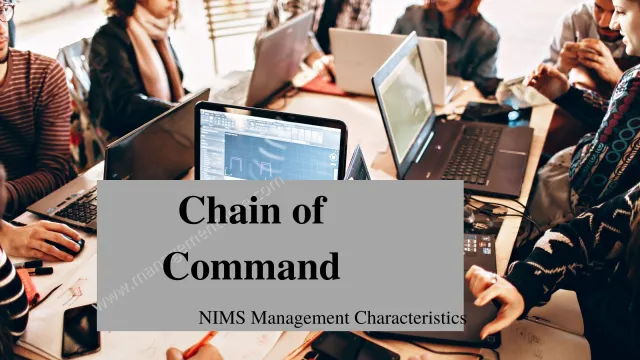NIMS Management Characteristics
Identifying requirements, order & acquire, track & report, restock & demobilize are part of which NIMS management characteristic? Comprehensive resource management is a key branch of NIMS that focuses on keeping accurate inventories of resources.
Customization of NIMS to responders’ operating needs is one way of increasing the likelihood that second and third circle responders will utilize it. However, over-customization can lead to an inability to integrate with others during incident responses. In this article, we will discuss about Acquiring Storing and Inventorying Resources are Part of Which Nims Manag.
Identifying Requirements
When an incident occurs, local emergency responders manage response using NIMS principles and ICS. These standards help units from diverse agencies connect, share information, and achieve situational awareness.
This includes the use of standardized methods to identify requirements for responding to an incident, including: ordering and acquiring, mobilizing, tracking and reporting, recovering and demobilizing, and inventorying resources. These processes are based on a national system of resource management.
The National Incident Management System (NIMS) provides a standard management approach for incidents of all types. It focuses on three key organizational constructs: the Incident Command System, multiagency coordination systems, and public information.
NIMS also requires that personnel with disaster-response roles have a common understanding of the procedures, practices, and systems that apply to their work, as well as a shared vocabulary and an understanding of the basic tenets of ICS. Training is important to achieving this, and FEMA offers a variety of courses that cover the basics of NIMS.
While these courses provide a base of knowledge, emergency management professionals often find that they need advanced education and training. Earning a master’s degree in a field such as criminal justice, homeland security, or emergency management is an effective way to expand your skills and gain more experience in emergency response and recovery.
A standardized way to describe resources, called “type descriptions,” helps ensure that responders know which resources are needed during an incident. This standardization allows for rapid and accurate resource selection, enhanced interoperability among ICS responders, and integration of tactical operations.
Another characteristic of ICS is the use of a chain of command, which allows an Incident Commander to direct and control the actions of all incident personnel. This type of structure also facilitates informal information sharing among personnel at the incident scene.
This is an important feature of ICS, because it ensures that all incident personnel are aware of their role in the incident and can communicate effectively to obtain and manage the resources they need. It also helps ensure that everyone knows what to expect when they get to the incident scene.
Ordering & Acquiring
As you may know, NIMS is the standardized system that helps in managing and coordinating different organizations in times of emergency incidents. But, before we talk about the NIMS structure, let us take a look at some of the major characteristics that NIMS needs to have in order to function efficiently.
First of all, let’s discuss the ‘capacity for emergency management and response personnel to interact and work well together’ as described by which of the key communications and information systems principles? This characterizes the ability of emergency management and response personnel to communicate with one another, share information, and achieve situational awareness.
Second, let’s look at ‘the ability to follow established processes for gathering, analyzing, assessing, sharing, and managing data’ as described by which of the key communications principles? This characteristic identifies the ability of emergency management and response personnel throughout an incident to follow established processes for gathering, analyzing, and assessing information.
Third, let’s talk about ‘the ability to eliminate confusion caused by conflicting instructions’ as described by which of the key communications standards? This characteristic identifies the ability of individuals and teams within an incident to eliminate confusion by following consistent, well-documented, and established procedures.
Fourth, let’s talk about ‘the capability of emergency management and response personnel to adjust quickly and safely to changing conditions’ as described by which of the key communications characteristics? This characteristic identifies the ability of individual emergency management and response personnel to adapt to changing conditions, especially in terms of resource availability.
Fifth, let’s talk about ‘the capacity of emergency management and response personnel to coordinate their efforts to accomplish a task’ as described by which of the key communications criteria? This characteristic identifies the ability of each incident to coordinate its efforts to accomplish a task.
Sixth, let’s talk about ‘the use of standardized names and definitions for major organizational functions and units’ as described by which of the key communication principles? This characteristic identifies the ability for ICS, EOCs, MAC Groups, and JIS to use standardized names and definitions for major organizational units and functions.
Restocking & Demobilizing
Restocking & Demobilizing
NIMS requires that all personnel – whether responding to an incident or working in an ongoing emergency – be able to safely leave the incident site once the incident is over. This includes ensuring staff members, volunteers and their families get back home safely. The Logistics team is responsible for making sure that this occurs.
They also ensure that staff and volunteers have their equipment, supplies and medical gear with them when they leave. This includes transporting them to Port-au-Prince and from Aquin, where the demobilization site is located.
This involves a number of different tasks including: acquiring storing and inventorying resources, restocking the site with essentials such as water, food and shelter, determining if there is any damage to the site or the people living in it, repairing equipment and providing transportation for staff to return home.
The restocking and demobilization process should occur at the same time as managers begin mobilizing resources to support the incident response. This ensures that personnel and equipment have what they need when they need it, and reduces the possibility of a resource shortage.
One key to achieving the restocking and demobilization processes is to establish and maintain a system for gathering, analyzing, sharing and managing incident-related information and intelligence. This enables emergency management agencies to work together to plan and respond effectively to incidents.
It is important that resources are requested only when they are needed through appropriate authorities and established resource management systems. This helps to eliminate confusion that can result from conflicting instructions and ensures that emergency personnel are not overloaded.
When an incident is deemed to be a large or complex event, local emergency personnel may be required to activate a Unified Command or Mutual Aid Agreement. This enables multiple jurisdictions to share in the command, control and coordination of incident response operations with a single incident action plan.
This enables emergency responders to focus on reducing risk to the public, rather than focusing on how many personnel and resources they can muster. It also increases efficiency and effectiveness of a response by enabling emergency management agencies to use standardized organizational structures that increase communication, integration, and accountability between responders from different jurisdictions.






